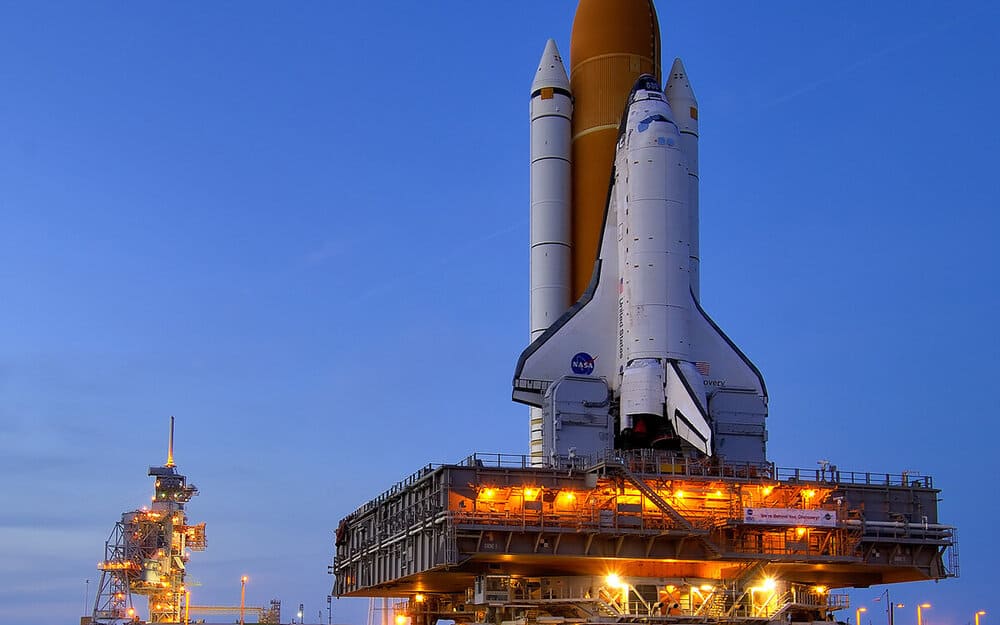The Space Shuttle Program stands as one of the most significant advancements in aerospace innovation and human spaceflight. Initiated by NASA in the 1970s, this ambitious project aimed to develop a reusable orbital vehicle that would transform space exploration and pave the way for future missions. The program’s success and challenges provided invaluable insights into the potential and limitations of reusable spacecraft.
Historical background and development
The origins of the Space Shuttle Program trace back to the early 1960s when the concept of a reusable spacecraft first emerged. However, it wasn’t until the late 1970s that NASA began serious development of the shuttle. The goal was to create a space transportation system that could carry astronauts and cargo to low Earth orbit, return safely, and be reused for multiple missions.
The development phase saw the creation of several key components, including the Reusable Launch Vehicle (RLV), the Shuttle Orbiter, and the external tank and solid rocket boosters. These components were integral to the shuttle’s ability to launch, operate in space, and return to Earth.
Key milestones and shuttle missions
The Space Shuttle Program achieved numerous milestones throughout its operational life. The first shuttle, Columbia, launched on April 12, 1981, marking the program’s inaugural mission. This successful flight demonstrated the shuttle’s capabilities and set the stage for subsequent missions.
Over the years, the program included a fleet of five operational orbiters: Columbia, Challenger, Discovery, Atlantis, and Endeavour. Each shuttle played a critical role in various missions, ranging from deploying satellites to constructing the International Space Station (ISS).
Challenger’s mission in 1983 saw the first American woman, Sally Ride, in space. Discovery was pivotal in launching the Hubble Space Telescope in 1990, while Atlantis conducted the final servicing mission to the Hubble in 2009. The construction of the ISS was heavily reliant on shuttle missions, with numerous flights dedicated to delivering and assembling components.
Innovations in reusable spacecraft technology
One of the most revolutionary aspects of the Space Shuttle Program was its focus on reusable technology. Unlike previous spacecraft that were designed for single-use missions, the shuttles were built to be refurbished and flown multiple times. This approach significantly reduced the cost per flight and allowed for more frequent missions.
The orbiter’s reusability was a major innovation. Each orbiter was designed to withstand the rigors of multiple launches and re-entries. The thermal protection system, consisting of thousands of heat-resistant tiles, protected the shuttle from the intense heat of re-entry. After each mission, the orbiter underwent extensive maintenance and refurbishment to prepare for the next flight.
The solid rocket boosters (SRBs) were another critical component designed for reuse. After providing the necessary thrust during liftoff, the SRBs were jettisoned and recovered from the ocean for refurbishment. This practice not only saved costs but also provided valuable data for improving future designs.
Challenges and tragedies
Despite its successes, the Space Shuttle Program faced significant challenges and tragedies. The most notable incidents were the losses of the Challenger and Columbia orbiters, which resulted in the deaths of their respective crews.
The Challenger disaster occurred on January 28, 1986, when the shuttle broke apart 73 seconds after liftoff due to a failure in one of the SRBs. This tragedy highlighted the risks of space travel and led to a 32-month hiatus in shuttle flights while NASA implemented safety improvements.
The Columbia disaster took place on February 1, 2003, when the orbiter disintegrated upon re-entry due to damage sustained during launch. This incident prompted further enhancements in shuttle safety and reinforced the need for rigorous inspection and maintenance procedures.
Scientific and technological contributions
The Space Shuttle Program made numerous contributions to science and technology. The deployment and maintenance of the Hubble Space Telescope stand out as one of the program’s most significant achievements. Hubble has provided unparalleled views of the universe, leading to groundbreaking discoveries in astronomy and cosmology.
The construction and servicing of the International Space Station (ISS) were heavily dependent on the shuttle. The ISS serves as a platform for scientific research in microgravity and has advanced our understanding of various scientific disciplines, from biology to physics.
The shuttle also facilitated the deployment of numerous satellites, enhancing global communications, weather forecasting, and Earth observation. These satellites have had profound impacts on everyday life, improving everything from navigation systems to disaster response.
Legacy of the space shuttle program
The legacy of the Space Shuttle Program extends beyond its technological innovations and scientific contributions. The program inspired generations of scientists, engineers, and space enthusiasts. It demonstrated the potential of human spaceflight and the importance of international collaboration in space exploration.
Following the retirement of the shuttle fleet in 2011, NASA has shifted its focus to new frontiers, including the Artemis program, which aims to return humans to the Moon and eventually to Mars. The lessons learned from the Space Shuttle Program continue to inform the design and development of next-generation spacecraft.
Private companies, such as SpaceX and Blue Origin, have also drawn inspiration from the shuttle’s achievements. SpaceX’s Falcon 9 rocket, with its reusable first stage, and the development of the Starship spacecraft are direct descendants of the shuttle’s pioneering work in reusability.
The Space Shuttle Program remains a testament to human ingenuity and the relentless pursuit of exploration. Its innovations in reusable spacecraft technology revolutionized space travel and laid the groundwork for future missions. While the program faced significant challenges and tragedies, its contributions to science, technology, and international cooperation are enduring.
As we look to the future of space exploration, the legacy of the Space Shuttle Program will continue to inspire and guide our journey to the stars. The lessons learned and the technological advancements achieved during this era will undoubtedly shape the next chapter of human spaceflight.


